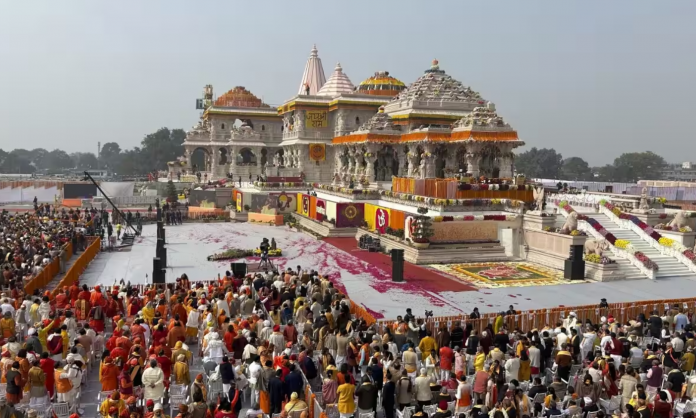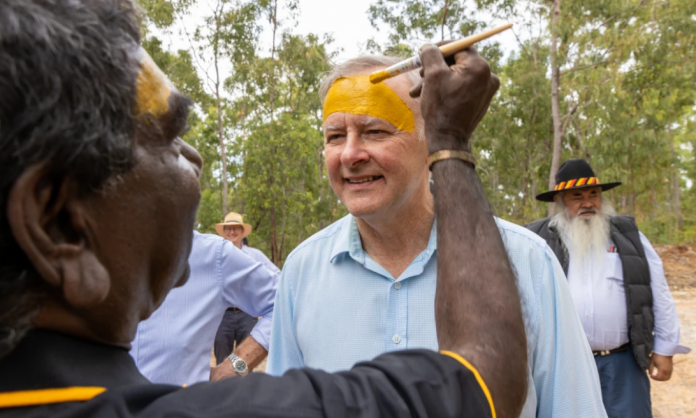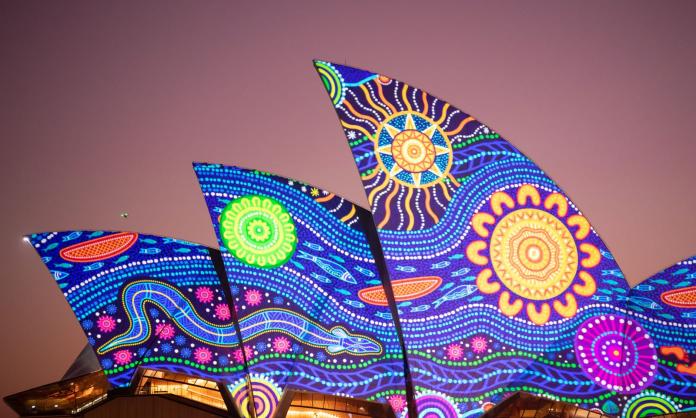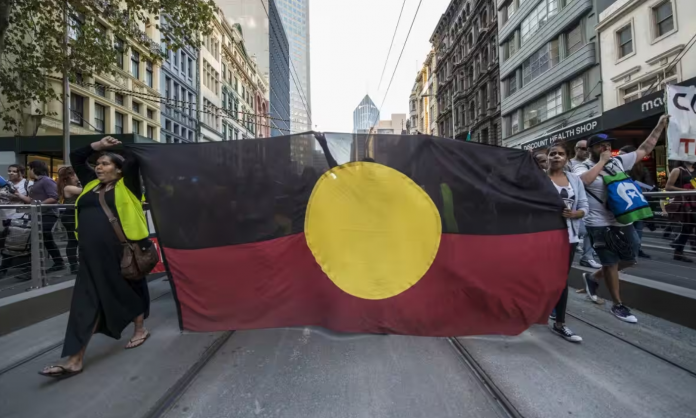The inauguration of a half-completed Hindu temple at Ayodhya, a provincial town in India, is a significant marker in India’s move towards what can broadly be termed fascism, represented and led by Prime Minister Narendra Modi’s ruling Bharatiya Janata Party (Indian People’s Party, BJP), its parent body the Rashtriya Swayamsevak Sangh (National Volunteers Organisation, RSS) and its more than 100 affiliates, collectively called the Sangh Parivar (Sangh family).
The new temple is the culmination of a 33-year religious-nationalist campaign, which began in September 1990. The architects of the campaign wanted to build a temple to the Hindu god Ram at the site of a sixteenth century mosque, the Babri Masjid. Far-right activists from the BJP, the RSS and its affiliates mobilised tens of thousands of people in an anti-Muslim movement, finally demolishing the mosque on 6 December 1992 with the collaboration of the federal Congress Party government.
This reactionary movement helped the BJP consolidate its base. The destruction was followed by sectarian riots that killed more than 2,000 people, mostly Muslims, across several northern states.
Ever since, scholars and activists have debated how to characterise the now dominant politics of Hindutva (Hinduness) represented by the BJP. The party’s ideological and organisational roots come from the RSS. B.S. Moonjee (1872-1948), who mentored the founder of RSS, drew inspiration from the Italian fascists. M.S. Golwalkar, the second supreme leader of RSS, in his book We, or Our Nationhood Redefined, praised Nazi Germany’s treatment of Jews.
However, the broad categorisation of “fascist” can be applied to Hindutva politics if one agrees with the following broad and flexible definition of the process made by the late Aijaz Ahmad, who wrote in a 1998 essay, “Right-wing politics, and the cultures of cruelty”:
“The sum of ideologies for which the term ‘fascist’ seems appropriate are ideologies that belong specifically to the age of imperialism, anti-imperialism and revolutionary class struggle ... Fundamental to these forms of politics has been the will to fashion an anti-materialist conception of revolution, anti-liberal conception of nationalism, anti-rational critique of modernity, anti-humanist assaults on the politics of liberation, in a rhetoric of ‘blood and belonging’ and in the name of a glorious past that never was ...
“[The] end-of-century fascisms of today correspond to the late imperial period of full globalisation of the capitalist mode, in which it ... faces internal crises of stagnation in the core and unmanageable social tensions in the less industrialised countries brought about in part by that imperialist globalisation and in part by the defeat or decay of the socialist, democratic and secular nationalist projects.”
This sums up the general features of the politics of Hindutva, the project of recasting a formally secular constitutional republic into a Hindu rashtra (Hindu nation) with a monolithic “Hindu” religion based on a dominant tradition of Sanskrit, reinforcing codes relating to caste and gender, and obedience to a supreme leader.
The appeal of such a project—which seeks to subsume the irreconcilable class and social tensions under seemingly radical rhetoric, and to dissipate popular energies in violent aggression against “internal enemies of the pure nation”—to the upper classes is obvious.
The main invitees to the new temple’s opening were heads of industrial monopolies, movie stars, sportspersons, politicians, diplomats and judges. Industrialists, financiers and media houses have been the chief patrons, funders and deal makers of the RSS for more than 70 years.
Indian fascism seeks to rally a diverse range of capitalists, merchants, financiers, administrators, professionals, religious and military leaders to preside over a large reserve pool of the unemployed and disenfranchised who have been cast asunder from their social moorings and denied security of tenure or assurance of advancement by the sweeping winds of globalisation.
It is a counter-revolutionary project to shore up temporarily the interests of the corporate rulers and their minority of collaborators.
What is significant about the Indian experience is that the project of counter-revolution has had a long period of filtering down the social classes through the hundreds of Hindutva affiliates of the RSS, as well as through the decay of liberal democracy, which at least since the mid-1970s has promoted illegal detention, torture and extrajudicial killings, condoned rampant corruption and held an arrogant disregard for the less privileged sections of society.
Interestingly, most of the draconian laws used by the BJP and now branded fascist come from the eras of Congress rule. The principal difference is that the Congress sought to whittle away or undermine the checks and balances of liberal democracy over decades, while the BJP has used a bulldozer.
Parliament, the judiciary, the media, universities, the election commission and the reserve bank have been coerced into submission, taken over by corporate bosses sympathetic to the BJP, or stacked with Hindutva cadres or collaborators. All the while, the RSS affiliates have been given free rein to terrorise civil society wherever they can mobilise a base.
That’s why the new temple at Ayodhya is so ominous, and why it has been so celebrated among the establishment.










